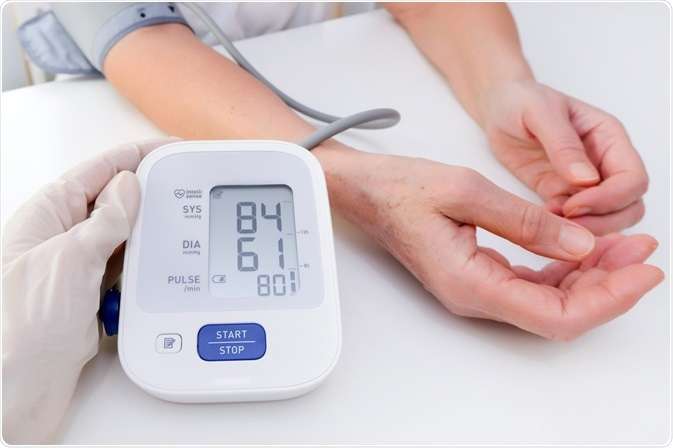Title: Low Blood Pressure: Signs, Symptoms, Causes, Risk Factors, Diagnosis, Prevention, Diet, Lifestyle, and Homoeopathic Treatment
Introduction:
Low blood pressure, also known as hypotension, refers to a blood pressure reading that is below the normal range. While high blood pressure is a more commonly discussed condition, low blood pressure can also impact one's health and well-being. Understanding the signs, symptoms, causes, risk factors, diagnosis methods, prevention strategies, diet and lifestyle considerations, and the potential role of homoeopathic treatment is essential for effectively managing low blood pressure. In this blog post, we will explore the key aspects of low blood pressure and its holistic approach to treatment.
Signs and Symptoms of Low Blood Pressure:
1. Dizziness or lightheadedness: Feeling faint or lightheaded, especially upon standing up.
2. Fatigue and weakness: Lack of energy and generalized weakness.
3. Blurred vision: Temporary loss of clear vision or difficulty focusing.
4. Rapid or shallow breathing: Breathing faster than usual or feeling short of breath.
5. Cold, clammy skin: Skin that feels cool to the touch and is often accompanied by sweating.
6. Fainting or loss of consciousness: Brief loss of consciousness, also known as syncope.
Common Causes of Low Blood Pressure:
1. Dehydration: Insufficient fluid intake or excessive fluid loss can lead to low blood volume and subsequent low blood pressure.
2. Medications: Certain medications, such as high blood pressure medications, diuretics, or antidepressants, can cause a drop in blood pressure.
3. Heart problems: Heart conditions, such as bradycardia (slow heart rate), heart valve problems, or heart failure, can contribute to low blood pressure.
4. Hormonal imbalances: Conditions like Addison's disease or hypothyroidism can lead to low blood pressure.
5. Nutritional deficiencies: Inadequate intake of essential nutrients, particularly B vitamins, can impact blood pressure regulation.
Risk Factors for Low Blood Pressure:
1. Age: Low blood pressure is more common in older adults.
2. Certain medical conditions: Individuals with diabetes, Parkinson's disease, or autonomic nervous system disorders are at a higher risk of experiencing low blood pressure.
3. Medications: Certain medications can lower blood pressure and increase the risk of hypotension.
4. Prolonged bed rest: Extended periods of immobility can lead to blood pressure drops upon standing.
Diagnosis of Low Blood Pressure:
Low blood pressure can be diagnosed through various methods, including:
1. Blood pressure measurement: Consistently low blood pressure readings below the normal range.
2. Medical history and physical examination: Discussing symptoms, medical history, and lifestyle factors with a healthcare professional.
3. Additional tests: Further investigations may be necessary to identify the underlying cause, such as blood tests, electrocardiogram (ECG), or echocardiogram.
Prevention Strategies, Diet, and Lifestyle Considerations:
1. Stay hydrated: Drink an adequate amount of water throughout the day to maintain proper blood volume.
2. Avoid sudden position changes: When transitioning from lying or sitting to standing, do so slowly to allow your body to adjust.
3. Wear compression stockings: These stockings can help improve blood flow and prevent blood pooling in the legs.
4. Eat regular meals: Ensure you have regular, balanced meals to avoid fluctuations in blood sugar levels.
5. Limit alcohol consumption: Excessive alcohol intake can lower blood pressure, so it's important to drink in moderation.
6. Exercise regularly: Engage in regular physical activity to improve cardiovascular health and blood pressure regulation.
Homoeopathic Treatment for Low Blood Pressure:
Homoeopathic treatment for low blood pressure aims to address the underlying causes,
improve circulation, and restore blood pressure to normal levels. Some commonly used homoeopathic remedies for low blood pressure include:
1. Gelsemium: Indicated for low blood pressure with dizziness, weakness, and fatigue.
2. Natrum muriaticum: Useful for low blood pressure associated with fatigue, fainting spells, and cold extremities.
3. China officinalis: Recommended for low blood pressure with weakness, dizziness, and pale skin.
It is important to consult a qualified homoeopathic practitioner for an accurate diagnosis and individualized treatment plan based on your specific symptoms and overall health.
Conclusion:
Low blood pressure can cause various symptoms and impact daily life. By understanding the signs, symptoms, causes, risk factors, prevention strategies, diet and lifestyle considerations, and considering homoeopathic treatment as a complementary approach, individuals can effectively manage low blood pressure and improve their overall well-being. Remember to consult healthcare professionals for an accurate diagnosis and to create a comprehensive treatment plan tailored to your specific needs.



Leave a Message